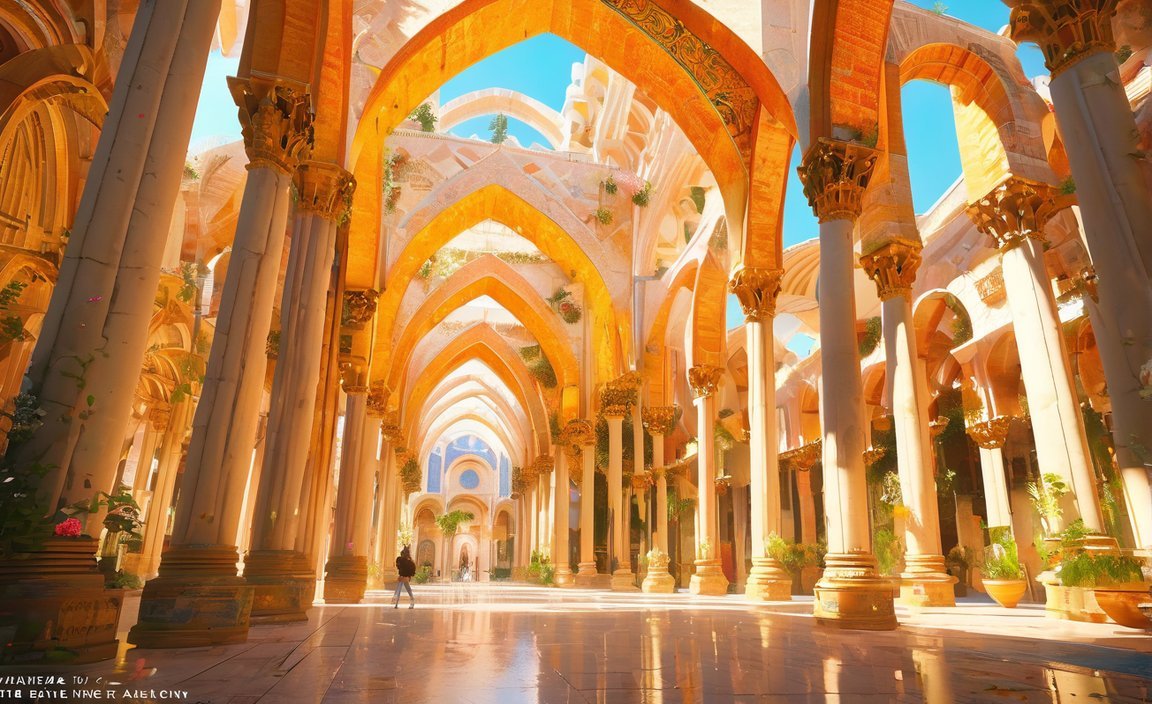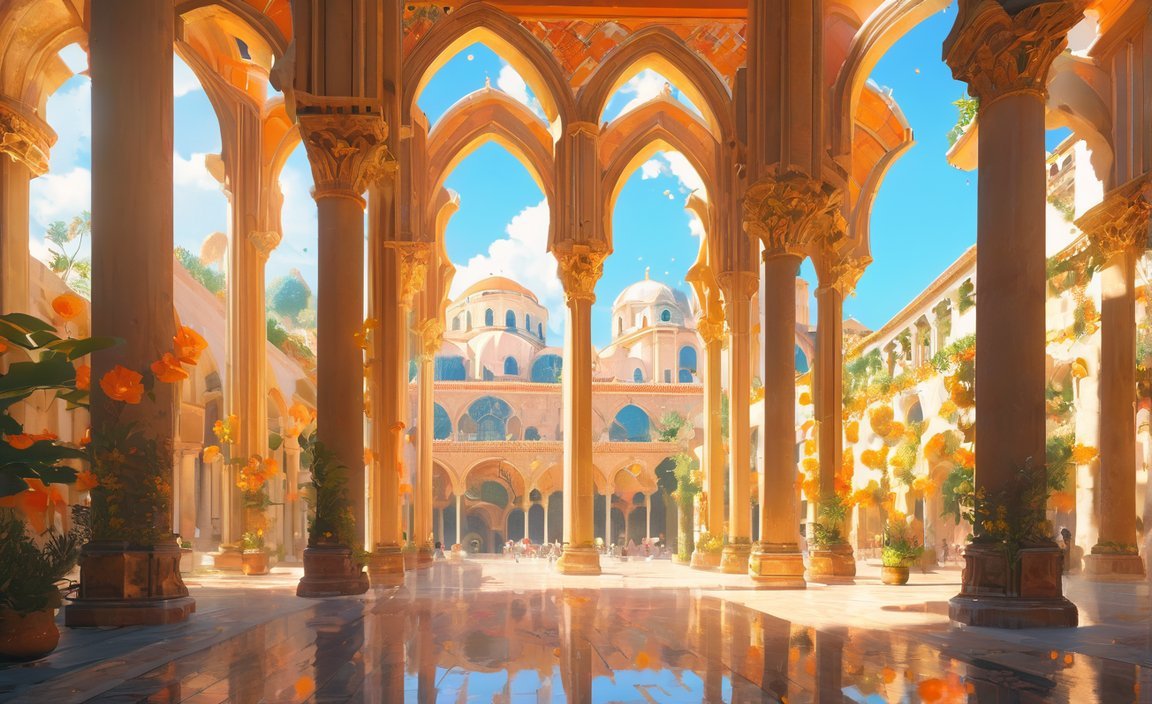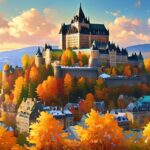Unveiling Valencia: 5 Fascinating Facts about the Vibrant City

Discover the enchanting city of Valencia through its hidden treasures and captivating traditions. As a seasoned travel writer with extensive knowledge of this vibrant destination, I am thrilled to share with you five fascinating facts that will leave you in awe. From its rich history and stunning attractions to its renowned festivals and culinary delights, Valencia offers a unique blend of modernity and tradition that will undoubtedly captivate your wanderlust. Join me on this virtual journey as we uncover the charm and allure of Valencia.
Key Takeaways:
City of Arts and Sciences: Valencia’s City of Arts and Sciences is an impressive architectural complex, showcasing modern design and innovation with its opera house, planetarium, science museum, and oceanographic park.
Valencia Cathedral and the Holy Grail: The Valencia Cathedral is a magnificent Gothic-style structure that houses the Holy Grail, believed to be the cup used during the Last Supper by Jesus. It holds immense religious and historical significance.
Explore the Old Town: Valencia’s Old Town offers a charming atmosphere with its narrow streets, picturesque squares, and historic buildings. The Plaza de la Virgen in the heart of the Old Town is a vibrant gathering spot.
Mercado Central: The bustling Central Market, also known as Mercado Central, is one of Europe’s oldest markets. It offers a wide variety of fresh produce, local delicacies, and traditional products, providing a great opportunity to immerse oneself in local culture.
Birthplace of Paella: Valencia is renowned as the birthplace of paella, a famous Spanish dish. Visitors can indulge in authentic paella while exploring its culinary roots.
Thriving Economic Center: Valencia is a significant economic center in Spain, known for its contributions to industries such as textiles, metals, chemicals, automobiles, and ceramic tiles.
Quirky Museums and Vibrant Festivals: Valencia offers unique museums, including the Fallas Museum and L’Umbracle sculpture gallery, providing offbeat and intriguing experiences. The city is also known for its lively festivals, like the Fallas festival, featuring spectacular pyrotechnic displays.
5 Facts About Valencia
Located on the Mediterranean coast of Spain, Valencia is a vibrant city that seamlessly blends history with modernity. From its stunning architecture to its rich cultural heritage, this captivating destination has something to offer every traveler. Here are five fascinating facts about Valencia that showcase its charm and make it a must-visit city:
1. The City of Arts and Sciences
One of the most prominent attractions in Valencia is the City of Arts and Sciences. This architectural complex is a true masterpiece of modern design and innovation. It features an opera house, a planetarium, an interactive science museum, and an oceanographic park. The futuristic structures are a sight to behold and a testament to Valencia’s commitment to the arts and sciences.
2. The Valencia Cathedral and the Holy Grail
The Valencia Cathedral is an iconic landmark that holds religious and historical significance. Nestled in the heart of the city, this magnificent Gothic-style structure is where you can find the Holy Grail, the cup believed to have been used by Jesus during the Last Supper. The cathedral’s stunning architecture and its connection to such a sacred relic make it a must-visit for history enthusiasts.
3. Exploring the Charming Old Town
Valencia’s Old Town is a treasure trove of history and charm. Its narrow streets, picturesque squares, and historic buildings offer a delightful atmosphere for visitors to explore. Make sure to visit the Plaza de la Virgen, located in the heart of the Old Town. This vibrant square is a popular gathering spot and provides a glimpse into Valencia’s lively culture.
4. The Central Market Experience
A visit to Valencia wouldn’t be complete without immersing yourself in the bustling atmosphere of the Central Market, also known as Mercado Central. This historic market is one of the oldest in Europe and offers a sensory feast for food enthusiasts. From fresh produce to local delicacies and traditional products, the market showcases the city’s culinary delights and vibrant culture.
5. Birthplace of the Iconic Paella
Valencia is renowned as the birthplace of paella, one of Spain’s most famous dishes. This savory rice dish, traditionally made with ingredients such as rice, saffron, vegetables, and meat or seafood, has its roots deeply ingrained in the city’s culinary heritage. Indulge in an authentic plate of paella while in Valencia and experience the explosion of flavors that make this dish so beloved worldwide.
Valencia stands as a testament to the harmonious coexistence of past and present, offering a captivating blend of history and modernity. From its architectural wonders to its culinary delights, this vibrant city has something to captivate every traveler. Don’t miss the opportunity to uncover the hidden treasures of Valencia and create lasting memories in this enchanting destination.
Here are some intriguing facts about various destinations:
- 5 facts about Prince Edward Island – Discover fascinating details about the captivating Prince Edward Island.
- 5 facts about Toronto – Uncover intriguing and lesser-known facts about the vibrant city of Toronto.
- 5 facts about Toronto, Canada – Explore interesting and captivating facts about Toronto, Canada, a city full of diversity and culture.
- 5 facts about Varanasi – Delve into the rich history and unique experiences of Varanasi, a city that holds immense spiritual significance.
Feel free to click on any of the links to satisfy your curiosity!
The Fallas Festival in Valencia
The Fallas Festival, held annually in March, is a vibrant celebration that showcases Valencia’s traditions and artistic craftsmanship through spectacular displays and fiery processions. As one of Spain’s most famous festivals, it draws both locals and visitors from around the world to immerse themselves in the unique atmosphere of this cultural event.
The Plantà: Creating Monumental Art
The Fallas Festival kicks off on March 15th with the highly anticipated Plantà. During this event, dedicated Fallas commissions work tirelessly to set up impressive monuments throughout Valencia. These monuments, crafted with papier-mâché and wax, depict satirical scenes and social commentaries. The level of craftsmanship and attention to detail displayed in these creations is truly awe-inspiring.
Award-Giving Procession: Honoring Tradition
On March 17th, the falleras mayores (the festival’s queens) and their commissions participate in a grand procession towards Plaza del Ayuntamiento to receive their awards. This ceremony is a significant moment during the festival, where the hard work and dedication of the commissions are recognized and celebrated.
The Night of Fire: A Dazzling Display
Fireworks play a central role in the Fallas Festival. From March 1st to 19th, Valencia’s night skies come alive with dazzling firework displays. The most anticipated event is the Nit Del Foc, or the Night of Fire, held at Alameda. At the stroke of midnight, spectators are treated to a mesmerizing show of pyrotechnics, illuminating the city and creating a magical atmosphere.
The Flower Ofrenda: A Floral Tribute
Another significant event during the Fallas Festival is the Flower Ofrenda, which takes place on March 17th and 18th. During this time, all the Fallas commissions of Valencia parade through the city, carrying flowers and offering them to the Virgen de los Desamparados in Plaza de la Virgen. The streets come alive with color and fragrance as participants pay homage to the patroness of Valencia.
A Celebration of Heritage: The Fallas Festival and Valencia
The Fallas Festival holds deep historical and cultural significance for Valencia. With roots dating back to ancient times, it has evolved into a symbol of the city’s heritage, blending tradition, satire, and art. The festival provides a unique and immersive experience that captivates both locals and visitors, offering a glimpse into Valencia’s rich traditions and artistic spirit.
To learn more about the Fallas Festival, you can visit Visit Valencia’s website or refer to Wikipedia’s page for a comprehensive overview of the festival. UNESCO has also recognized the cultural importance of the Fallas Festival, designating it as an Intangible Cultural Heritage. For more information on this distinction, visit UNESCO’s official website.
Key Takeaways:
– The Fallas Festival showcases Valencia’s traditions and artistic craftsmanship through spectacular displays and fiery processions.
– The Plantà is a highlight of the festival, where monumental papier-mâché and wax monuments are set up throughout Valencia.
– The award-giving procession honors the hard work of Fallas commissions and their queens.
– The Night of Fire features dazzling firework displays, especially during the Nit Del Foc at Alameda.
– The Flower Ofrenda pays tribute to the patroness of Valencia through a vibrant parade of flowers.
– The Fallas Festival is deeply rooted in Valencia’s heritage and offers a unique experience for visitors and locals alike.
The City’s Local Cuisine: A Taste of Mediterranean Delights
Valencia, a vibrant city located on the stunning Mediterranean coast of Spain, offers an exquisite culinary experience that showcases the region’s rich traditions and flavors. The city’s local cuisine, including the famous dish paella, reflects its Mediterranean location and is a must-try for food enthusiasts seeking a delightful gastronomic adventure. Let’s uncover five fascinating facts that highlight the charm and significance of Valencia’s culinary heritage.
Fact 1: The Origins of Valencian Paella
Valencian paella, considered the heart of Valencia’s gastronomy, has a captivating history dating back to the 15th century. This iconic dish is believed to have been invented by rice farmers in the Albufera region, who cooked a hearty meal with the ingredients readily available to them. The combination of locally grown rice, vegetables, meat (such as chicken and rabbit), and aromatic spices like saffron created a flavorful masterpiece that captured the essence of the Mediterranean.
Fact 2: A Feast for the Senses
The preparation and cooking process of Valencian paella involve more than just ingredients. Traditionally, the dish is cooked in a large, circular, shallow pan called a paella, which evenly distributes heat and allows the rice to develop a delightful consistency. To enhance the flavor, burning orange wood and sizzling oil are often used, creating a distinct aroma that fills the air and entices the senses. The vibrant colors, enticing scents, and sizzling sounds combine to create a truly immersive culinary experience.
Fact 3: Beyond a Meal, a Cultural Gathering
In Valencian culture, paella is not only a delicious meal but also a symbol of social gathering and togetherness. Farmers and families would come together to prepare and enjoy this iconic dish, fostering a sense of community. The act of sharing a plate of paella goes beyond satisfying hunger—it represents the warmth of relationships, the celebration of traditions, and the joy of connecting with others over a shared love for food.
Fact 4: La Pepica: A Culinary Institution
When in Valencia, one cannot miss the opportunity to indulge in an authentic plate of paella at La Pepica. This historic establishment, located on the city’s picturesque beachfront, has been serving up delectable paella since 1898. La Pepica’s commitment to preserving the traditional flavors and cooking techniques has made it a beloved institution among locals and visitors alike. It offers a chance to savor paella that is prepared with utmost care and passion, allowing you to truly appreciate the authentic taste of Valencia.
Fact 5: Recognized Culinary Heritage
Valencian paella holds a special place in the Mediterranean diet and is considered a powerful representation of Valencian culture. In recognition of its cultural significance and culinary heritage, Valencian paella has received protected status. This designation emphasizes the dish’s historical and cultural value, ensuring that its traditional preparation methods and unique flavors are preserved for generations to come.
Key Takeaways:
– Valencian paella originated in the 15th century in the Albufera region of Valencia, Spain.
– The dish is made with rice, vegetables, meat, and aromatic spices like saffron.
– Valencian paella is traditionally cooked in a large, circular, shallow pan called a paella.
– La Pepica, a renowned restaurant, offers an authentic and delicious paella experience in Valencia.
– Valencian paella is recognized as a protected dish, underscoring its cultural significance and culinary heritage.
Sources:
– National Geographic – From grain to plate: the story of Valencian paella and its homegrown
– The Guardian – Paella, ‘icon of the Mediterranean diet’, given protected status in Spain
Valencia’s Beautiful Beaches: The Perfect Getaway
When it comes to finding the perfect beach destination, look no further than Valencia. Located on the eastern coast of the Iberian Peninsula, Valencia’s strategic coastal location offers a range of beautiful beaches, perfect for sunbathing, water sports, and relaxation.
Valencia’s Coastal Delights
Valencia’s coastline stretches for an impressive 109 kilometers, forming the stunning Gulf of Valencia. With its low-lying landscape and long stretches of sandy beaches, this region is a beach lover’s paradise. Whether you’re seeking a bustling beach with plenty of amenities or a serene spot to unwind, Valencia has something for everyone.
Bask in the Beauty of Playa de Las Arenas
One of the most popular beaches in Valencia is Playa de Las Arenas, also known as Playa del Cabanyal or Playa de las Arenas. Situated in the heart of Valencia city, this beach offers a range of amenities and activities for visitors. From beach volleyball to water sports, there’s no shortage of entertainment options. Soak up the sun, take a dip in the turquoise waters, and indulge in the vibrant atmosphere of this lively beach.
Discover the Allure of Playa de La Malvarrosa
Named after the renowned botanist Felix, Playa de La Malvarrosa is another beach that shouldn’t be missed. With its vast expanse of golden sand, this beach offers a perfect setting for relaxation and fun. Take a leisurely stroll along the promenade, try your hand at windsurfing or paddleboarding, or simply unwind on a beach towel and enjoy the gentle sea breeze. This bustling beach is a favorite among both locals and tourists.
Escape to Tranquility at Playa de La Patacona
If you’re seeking a more tranquil beach experience, look no further than Playa de La Patacona. This serene extension of Malvarrosa Beach is gaining popularity as a vacation spot in Valencia. Escape the crowds and immerse yourself in a peaceful atmosphere while basking in the golden sands and crystal-clear waters. Whether you’re looking for a romantic getaway or a serene family retreat, Playa de La Patacona is the perfect spot to unwind and recharge.
More Beaches to Explore
In addition to the mentioned beaches, there are other notable coastal gems near Valencia. Playa de Pinedo offers a calming atmosphere and picturesque views, while El Saler Beach is known for its natural beauty and dunes. If you’re up for an adventure, head to La Garrofera Beach, a secluded spot with crystal-clear waters, ideal for snorkeling and exploring marine life.
Key Takeaways:
– Valencia’s strategic coastal location offers a range of beautiful beaches, perfect for sunbathing, water sports, and relaxation.
– Playa de Las Arenas is a vibrant beach located in Valencia city, providing a lively atmosphere and various amenities and activities.
– Playa de La Malvarrosa offers a vast expanse of golden sand and is a favorite spot for both locals and tourists.
– Playa de La Patacona, an extension of Malvarrosa Beach, provides a serene and tranquil space to unwind and recharge.
– Other notable beaches near Valencia include Playa de Pinedo, El Saler Beach, and La Garrofera Beach.
Sources:
– Valencia Beaches – Vicki viaja
– Best Beaches in Valencia – Lonely Planet

FAQ
Q1: What are the main attractions at Valencia’s City of Arts and Sciences?
A1: Valencia’s City of Arts and Sciences is home to various structures such as an opera house, a planetarium, an interactive science museum, and an oceanographic park.
Q2: What is the historical significance of the Valencia Cathedral?
A2: The Valencia Cathedral is home to the Holy Grail, the cup believed to have been used by Jesus during the Last Supper. It is a magnificent Gothic-style structure with immense religious and historical importance.
Q3: What can visitors expect to find in Valencia’s Old Town?
A3: Valencia’s Old Town offers a charming atmosphere with its narrow streets, picturesque squares, and historic buildings. The popular Plaza de la Virgen, located in the heart of the Old Town, is a vibrant gathering spot.
Q4: What makes Valencia’s Central Market a must-visit destination?
A4: Valencia’s Central Market, also known as Mercado Central, is one of the oldest markets in Europe and offers a wide range of fresh produce, local delicacies, and traditional products. It is a paradise for food enthusiasts and a great place to immerse yourself in the local culture.
Q5: Why is Valencia well-known as the birthplace of paella?
A5: Valencia is renowned as the birthplace of paella, one of Spain’s most famous dishes. The savory rice dish, traditionally made with rice, saffron, vegetables, and meat or seafood, has deep roots in Valencia’s culinary heritage.
















